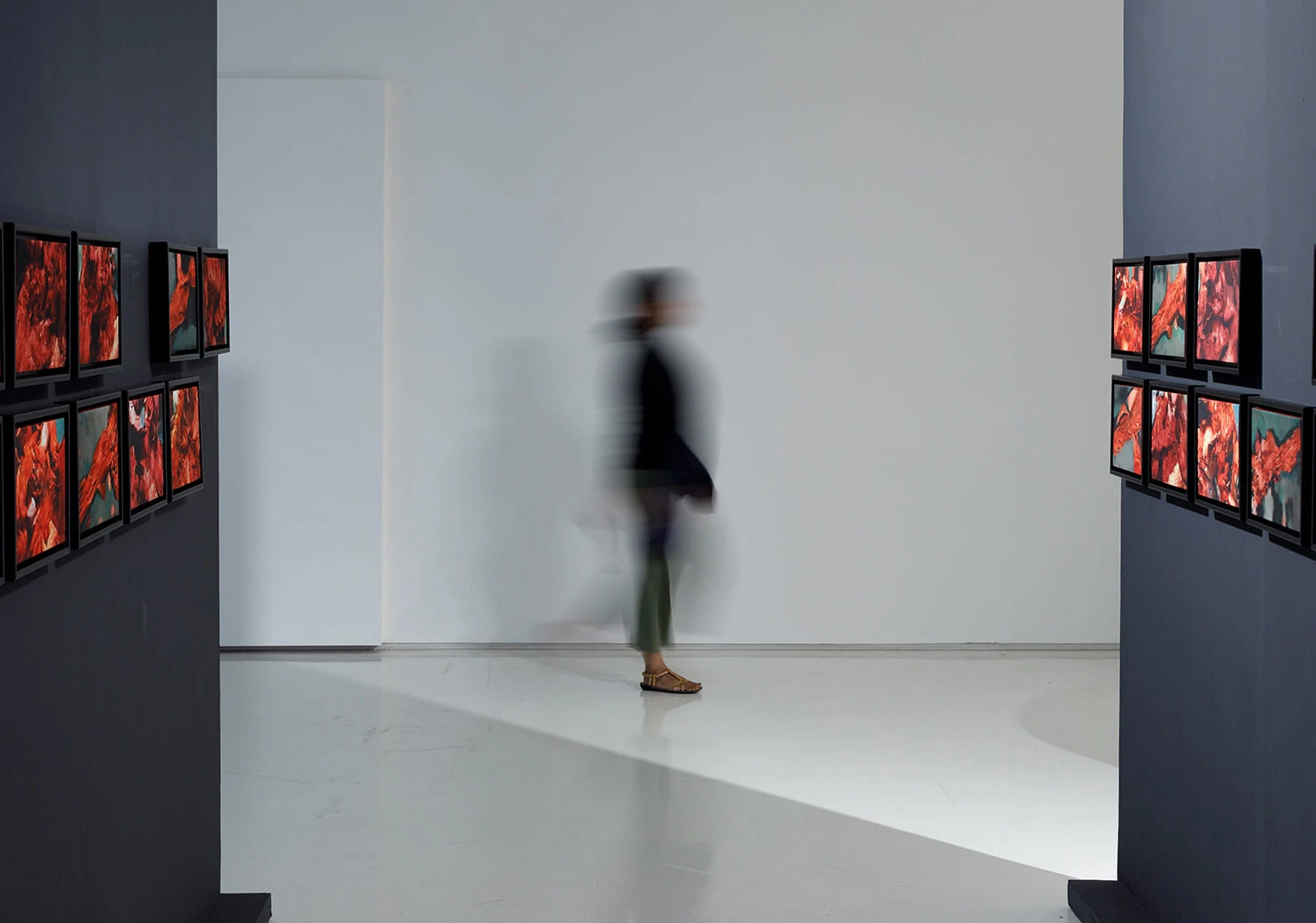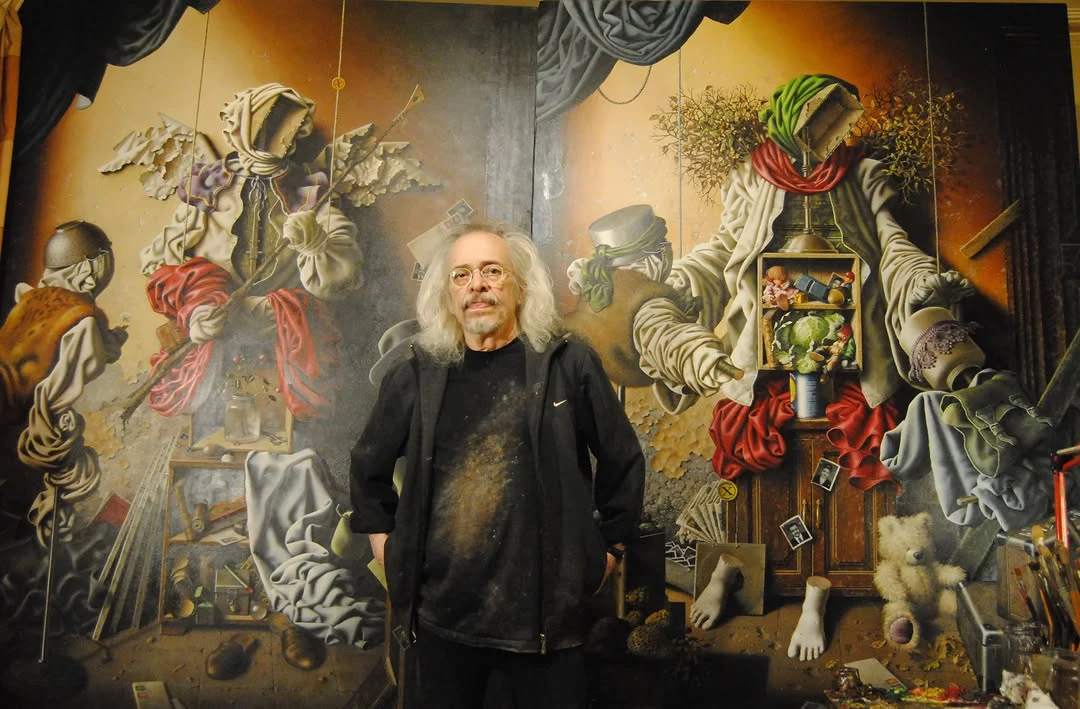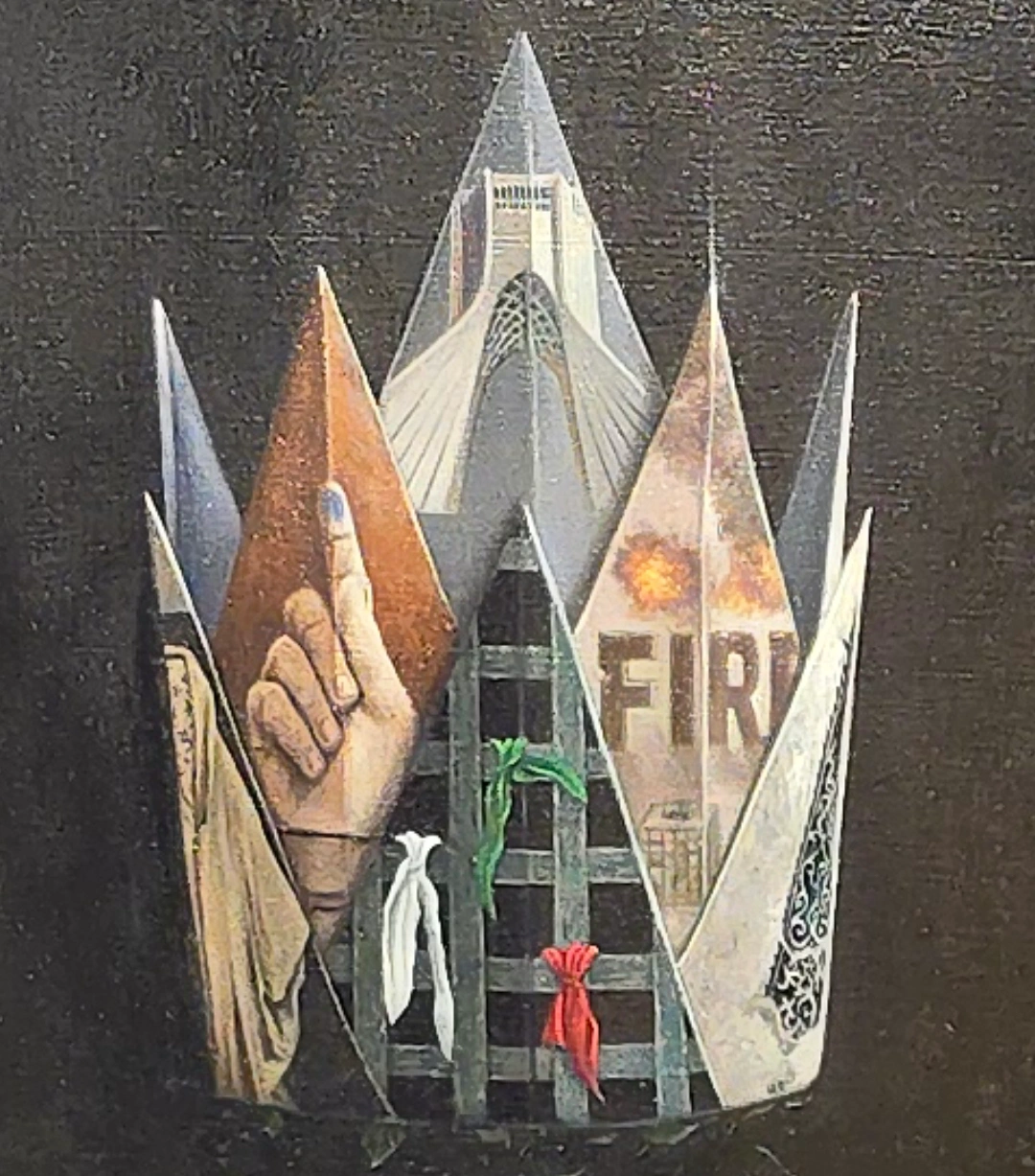Ehsan Toosi-Deception in the Subject of Burning
The Starting Point of the Collection
Ehsan Toosi, born in 1978, is a member of the Iranian Sculptors Association and has been active in sculpture since 2002. In his latest collection, titled "Burning Is Not for Watching", he creates objects that retain their familiar visual and conceptual frameworks but, through an altered industrial function, step into the realm of art.
"The conception and construction of this space date back to a year before the announcement of the COVID-19 pandemic. By employing materials that defy physical laws in his works, he challenges the conventional notion of a heater and, in a way, targets the audience’s expectations of its function and structure."[1] In his interviews, he has stated that the collection began in 2019, influenced by social issues and his living environment, gradually expanding the effects and afflictions imposed by society onto the world around him, seeking them within the geography of existence.[2]
Carrying History on a Decayed and Functionless Body
In Toosi’s sculptures, "function" is disrupted. The heater-shaped sculptures, with bodies made of wood, now possess the potential to burn themselves—as if their turn has come. Here, he takes utilitarian objects in service of his idea and undermines them. Upon closer inspection of these objects, their textures and surface details reveal decay, rust, fractures, and rot. It is as though these heaters carry history within them, presenting it before our eyes, and today, in a form of another material, they have become a "subject for burning"-so vulnerable that their first burning will be their last.
In part of his statement, he asserts: "Modern humans, inundated with vast amounts of information and data, believe they know much, but in truth, they know nothing. They are merely trapped in delusion, mental nausea, instability, agitation, and anxiety-until the end, they only have as much time as a single flame."[3]
Deception in the Representation of Reality
Drawing on the discourse surrounding representation in art, which originates from ancient Greece, an artist’s ideal in this regard is the repetition of presence or the replication of an image of nature and reality—an effort to simulate it so convincingly that it deceives the viewer, to the point where this model can be called the "deceptive representation of reality."[4] In encountering Toosi’s space, we face the same deception. At first, the audience searches for nostalgia, a loss in the past, or traces of ancestors in history (fig. 1). But over time, as they approach the sculptures, they find them to be points of intersection between past and future-objects that, in form and appearance, come from the past, yet in structure and context, herald the future (fig. 2).
"The past, in itself, is incomprehensible and formless; it only gains meaning and shape when connected to a part of the present." (Faramarzi, 1984, p. 295) Certainly, every present has a past, and the rewriting of history in art has always been evident in the intellectual currents of artists. "Thus, the claim that any understanding of the past is, in some way, a misunderstanding or misinterpretation is not without merit. The perspective from which we view history is not outside of history. Our reflection on the past is itself a product of history."[5]
Hence, in examining this collection, we revisit historical matters. The artist has placed history upon a cold, decayed body that once generated warmth, confronting us with the erosion inherent in his perspective. In his view, the universe exists in a state of burning, and his rusted objects fully represent this intellectual current. By compelling the audience to witness this burning, he positions the viewer at the intersection of his envisioned past and future, striving to set the world in motion and critique passivity and silence in the face of the future.[6]
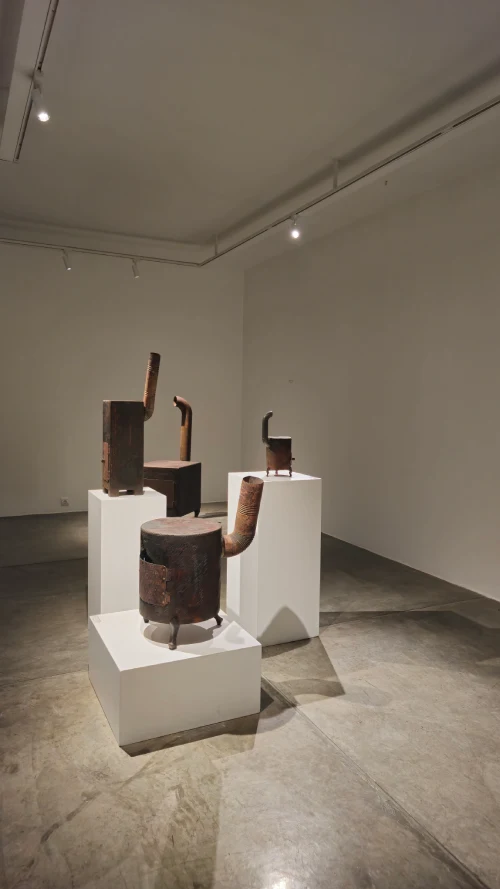
1. Ehsan, toosi. 2025, the Inconceivable Misery, shirin gallery, tehran, personal picture.
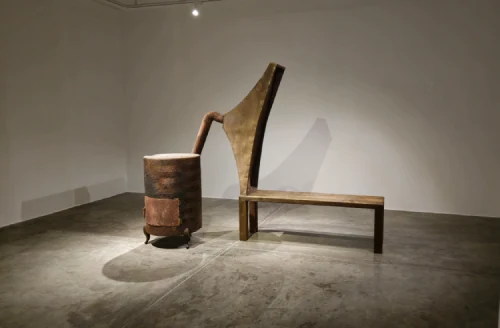
2. Ehsan, toosi. 2025, the Inconceivable Misery, 240×180×90cm, shirin gallery, tehran, personal picture.
References:
1. Toosi, ehsan, the Inconceivable Misery catalogue, shirin gallery, tehran, 2025.
2. Ehsan toosi and firoozeh saboori, 2025, “Questions about the Inconceivable Misery exhibition”.
3. Toosi, Ehsan. (2025) Statement from Shirin Gallery. (Accessed: 18 April 2025).
4. Ramin, Ali, (2022/1401) Foundations of the Sociology of Art. 10th ed. Tehran: Nashr-e Ney, pp. 229-230.
5. Hauser, Arnold, (1984/1363) The Philosophy of Art History. Translated by Mohammad Taghi Faramarzi. Tehran: Narshr-e Negah, pp. 295_296.
6. Ehsan toosi and firoozeh saboori, 2025, “Questions about the Inconceivable Misery exhibition”.
Firoozeh Saboori
